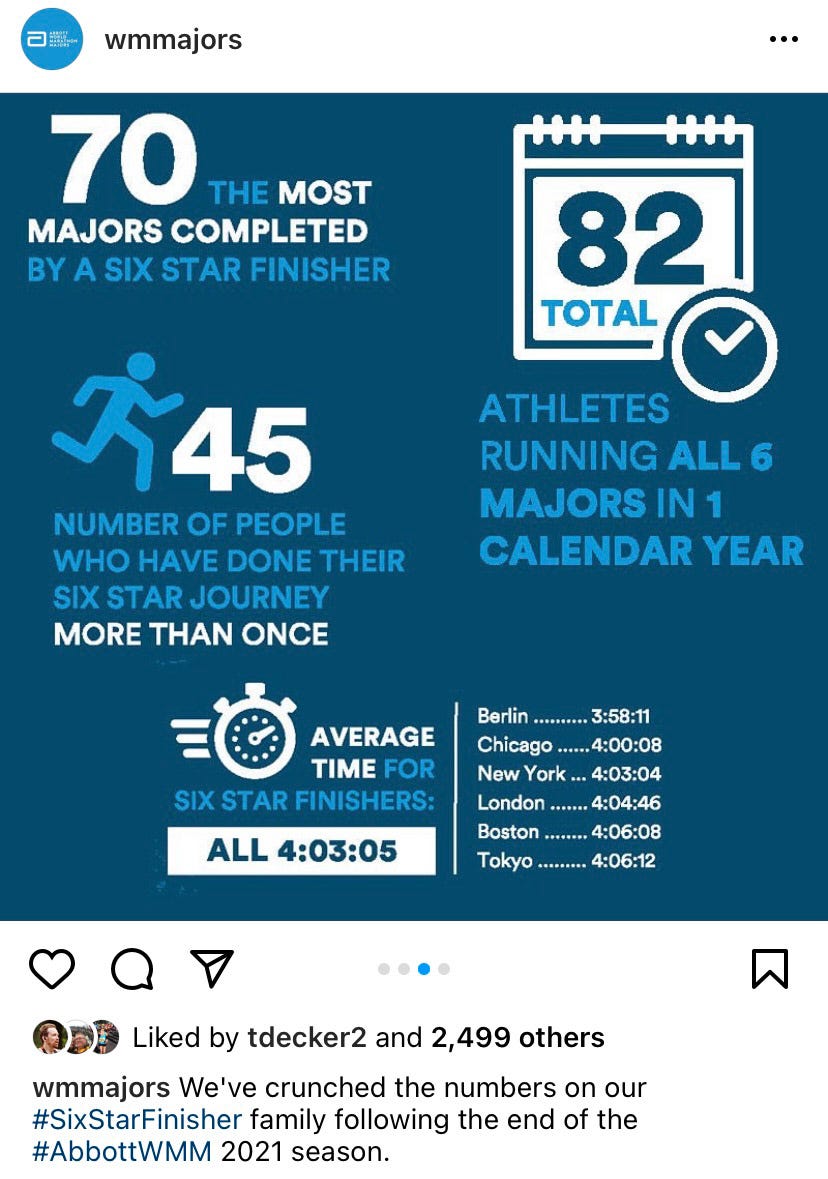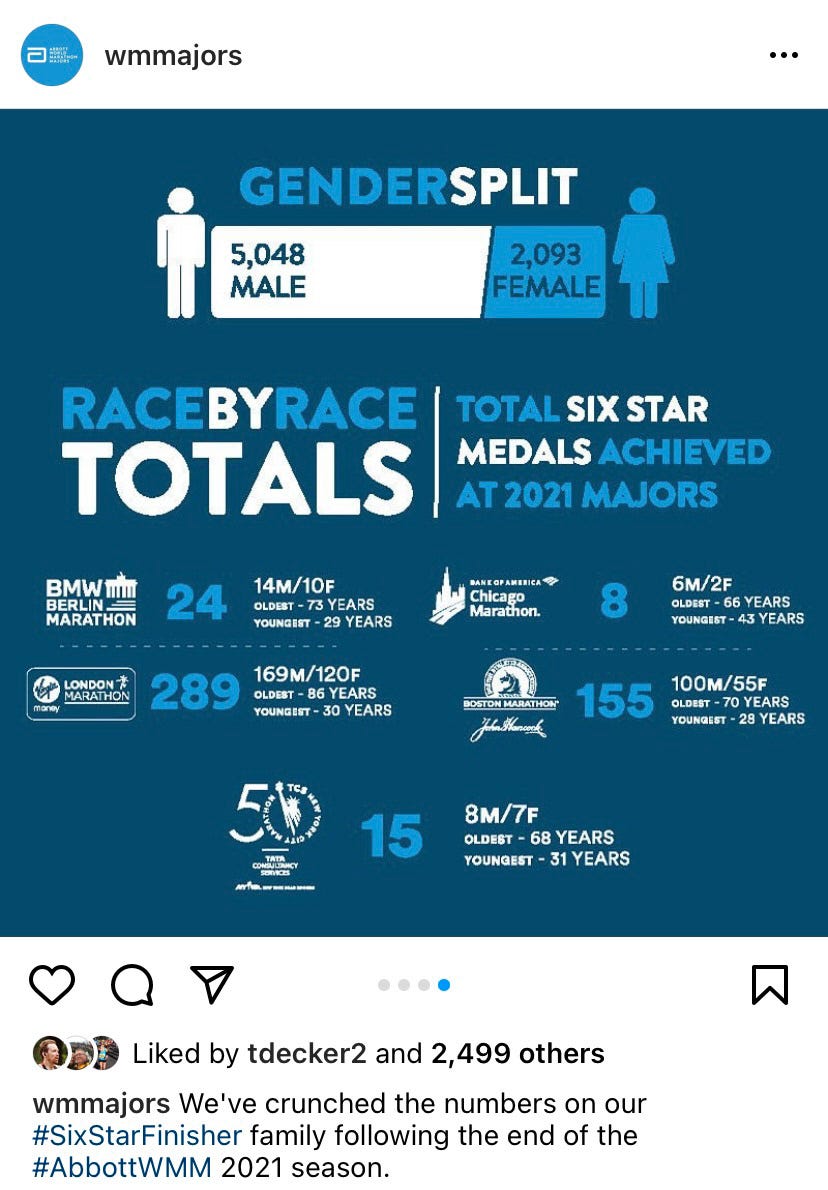Friday, October 27, 2023
Getting Ready for Your First 26.2
Sunday, October 8, 2023
Another World Record Falls at a World Marathon Major
Based in Teaneck, New Jersey, Jennifer Heiner served for several years as a retail director at a New Jersey running company and is an avid runner who has competed in six marathons. Jennifer Heiner volunteers with the New York Road Runners and has helped organized numerous group training runs focused on preparing runners for the New York City Marathon. The New York City Marathon began 50 years ago and is the world’s largest marathon. The race is also the main event of the New York Road Runners (NYRR) organization, a premier community running entity.
Held each year in November, the event draws more than 50,000 professional and amateur runners from more than 125 countries. The 26.2-mile running route passes through five of New York’s neighborhoods, including Queens, Staten Island, Brooklyn, the Bronx, and Manhattan. Over 10,000 volunteers and a million spectators watch the marathon’s runners compete from New York’s streets, while millions more watch the event on television.
The New York City Marathon is a part of the Abbott World Marathon Majors, a group of major marathons that take place in New York, Tokyo, Boston, London, Berlin, and Chicago. After the return of the World Marathon Majors in 2021 following the worldwide lockdown due the Covid pandemic, all 5 races (Toyko was still postponed or cancelled) were held in the fall within 6 weeks of each other, creating a unique challenge for those runners attempting to do some or all of the races in one season.
Abbott posted some interesting stats showing the breakdown of finishers, between gender, age, country of origin, and finish time. When will YOU begin or finish your World Marathon Major Journey?



Earlier today, Kipchoge's world record for the men in the Marathon fell at the hands of Kenyan Kelvin Kiptum. He ran the 2023 Chicago Marathon on October 8, 2023, in a blistering time of 2:00:35. Wow.
NBC Sports recapped the day here: Kelvin Kiptum breaks marathon world record at Chicago Marathon, nears 2-hour barrier - NBC Sports
Kenyan Kelvin Kiptum broke the marathon world record to win the Chicago Marathon in 2 hours and 35 seconds, nearly breaking the two-hour barrier.
Dutchwoman Sifan Hassan ran the second-fastest women’s time in history — 2:13:44 — to win the women’s race.
Kiptum, listed at 23 years old, broke countryman Eliud Kipchoge’s world record of 2:01:09 set at the 2022 Berlin Marathon.
“A world record was not in my mind today,” Kiptum said on NBC Chicago. “But I knew one day, one time I will be a world record holder.”
MORE: Chicago Marathon Results
Kiptum has run three career marathons — all in the last 10 months — and posted three of the six fastest times in history — 2:01:53 in Valencia, Spain, last December, followed by 2:01:25 in London in April.
He has supplanted the 38-year-old Kipchoge as the world’s best marathoner. Kipchoge, who held that distinction for most of the last decade, bids next year to become the first person to win three Olympic marathons.
Kipchoge is the only person known to have run 26.2 miles in under two hours, but it was not done in a record-eligible race. In 2019, he ran 1:59:40.2 in a special event in Vienna, Austria.
Recent advances in shoe technology coincided with the men’s and women’s marathon world records being broken multiple times in the last four years.
Conner Mantz was the top American man in sixth place in a personal best 2:07:47, improving on his U.S.-leading time since the start of 2022. Mantz is the clear favorite for the Feb. 3 Olympic Trials, where the top three are likely making the team for Paris.
Mantz was followed 13 seconds later by training partner Clayton Young, who lowered his personal best by 3:51 to become the second-fastest U.S. marathoner since the start of 2022.
Galen Rupp, a two-time Olympic medalist, clocked 2:08:48 in his first completed marathon in two years coming off injuries. Rupp, 37, answered any questions about whether he is a bona fide Olympic trials contender.
Hassan added to her legend with a second win in as many marathons with a time only bettered in history by Ethiopian Tigst Assefa’s world record 2:11:53 from two weeks ago.
At the Tokyo Olympics, Hassan became the first woman to win medals in the 1500m (bronze), 5000m (gold) and 10,000m (gold) at the same Games.
Six weeks ago, she again ran the 1500m, 5000m and 10,000m at the world championships, adding a silver and a bronze.
“I don’t know if six weeks is enough [to recover for the marathon],” said Hassan, now the second-fastest woman in history in both the mile and the marathon. “I just love the pain.”
Emily Sisson was the top American woman in seventh in 2:22:09, a year after lowering the American record to 2:18:29 in a runner-up finish in Chicago. Sisson goes into the Olympic Trials as the clear favorite.
Olympic bronze medalist Molly Seidel was the second American, 58 seconds behind Sisson, to re-establish herself in her first completed marathon in nearly two years.
Swiss Catherine Debrunner and Marcel Hug won the women’s and men’s wheelchair races in course record times.
The 2023 Berlin Marathon just took place a few short weeks ago, where defending champion and world record holder Eliud Kipchoge won for the men. Usually, the story focuses on him. But this time, it was the women’s champion, Tigist Assefa, who stole headlines by beating the women’s world record by over two minutes!
The following CNN article captures the highlights from the day: Tigist Assefa obliterates women’s marathon world record in Berlin while Eliud Kipchoge makes history (msn.com)
Ethiopia’s Tigist Assefa obliterated the women’s marathon world record on Sunday as she won the Berlin Marathon, completing the course in 2:11:53 and shaving more than two minutes off the previous best.
It marked her second consecutive Berlin Marathon title, and a time that was two minutes and 11 seconds faster than Brigid Kosgei’s previous world record set at the 2019 Chicago Marathon, though it is still subject to the usual ratification procedure, according to World Athletics.
Still a relative newcomer to the distance, it was only Assefa’s third ever competitive marathon after she made the switch from middle-distance running.
It was a blistering race from the very start with the leading 12 women all running within world record pace through the opening 15 kilometers.
By the halfway point, Assefa was more than a minute inside world record pace and alone at the head of the race, streaking ahead of the field.
Eventually, she crossed the finish line almost six minutes ahead of Kenya’s Sheila Chepkirui in second and Tanzania’s Magdalena Shauri in third — who set a national record with her time of 2:18:41.
Eliud Kipchoge won his fifth Berlin Marathon title. — Tobias Schwartz/AFP/Getty Images© Provided by CNN
Meanwhile, Kenya’s Eliud Kipchoge won a record fifth title in the men’s race, stopping the clock at 2:02:42, the fifth-fastest time of his career.
The two-time Olympic champion was challenged almost all the way by Derseh Kindie but he eventually outpaced the Ethiopian about 31 kilometers into the race and won by 31 seconds.
The speed of this year’s Berlin Marathon was underscored by a record nine men finishing inside 2:05 and a record eight women finishing inside 2:20.
Friday, September 29, 2023
Fall Marathon Season: How Do You Mentally Prepare for Race Day?
Jennifer Heiner is a New Jersey-based professional who formerly served as the retail director of a high end running specialty store, where she was responsible for a variety of tasks, including inventory control, hiring associates, and more. During her time with the organization, Jennifer Heiner also helped host a variety of races.
Before becoming involved with the running company, Ms. Heiner was involved with a variety of other firms, including Basking Ridge Animal Hospital, where she served as a client services coordinator. During this time, she helped maintain a busy team while also managing a variety of events at the hospital. Before starting her career, Ms. Heiner studied at Lehigh University, where she graduated with a bachelor of science in business administration and majored in marketing and economics.
Throughout her career, she has also been involved in a variety of professional organizations, including the two major New York City running clubs and organizations. There, Jennifer works with runners and volunteers alike in a customer service role to ensure that their experience at races is the best it can possibly be.
An avid runner herself, Jennifer Heiner has been tasked with helping draft training tips for runners participating in some of the aforementioned organizations’ races. Here are some highlights and things to keep in mind when training for a race, whether it is a Half Marathon or a full 26.2.
We recommend that you mix up your training by jumping into a couple of races before race day.
A 5K distance race is a great way to stretch your legs and test your fitness as you are working through the training program leading up to your Half Marathon!
What are some of the benefits of these so-called test-runs before your big race?
- Practice your race strategy! Running some shorter distance races before your goal race can help you practice your pre-race routine, race-day nutrition and fueling strategy, and helps you practice your pacing.
- Teach yourself how to run hard. A 5K will force you to push hard for a majority of the race, and will teach you how to push through fatigue and finish strong, which will help come race day in Central Park.
- Races are a great way to assess your fitness and fine-tune your race day pacing strategy.
- Racing is a great confidence booster! You can see how much you have improved over the course of your training program so far.
- Calm those nerves. Having already gone through the motions of your pre-race routine should help calm some race-day jitters.
"For every finish-line tape a runner breaks—complete with the cheers of the crowd and the clicking of hundreds of cameras—there are the hours of hard and often lonely work that rarely gets talked about."—Grete Waitz
Grete Waitz was a former world record holder from Norway, and was the first woman in history to run the marathon in under two and a half hours. Her method and mantra for training is helpful to all runners, whether we are novices or have toed the line at many races.
She always stated it was important to:
- Have an ultimate goal.
- Set up realistic goals and be flexible.
- Don’t increase the amount of your training or change your training schedule too fast. Your body needs time to adapt.
- Don’t change what works for you.
- Follow the principle of hard/easy training.
By embarking on this training program leading up to trace day, you are setting goals for yourself, methodically increasing your training, and are hopefully also figuring out what does or doesn't work for you. As the training cycle presses on and your long runs get longer and your speedwork gets faster, just remember to stick to the plan, and you'll arrive at the start line ready to crush your next race!
Wednesday, September 13, 2023
Recovery Tips from New York Road Runners
A marketing graduate of Lehigh University, Jennifer Heiner once served as the marketing director of a running company in New Jersey. Currently serving in an inside sales and customer service role, Jennifer Heiner is an active runner herself. Jennifer Heiner has also helped to organize a number of training runs for the New York City Marathon, including the 20-mile Three Bridges Run, where she was also a pace group leader.
Training for the Virtual TCS New York City Marathon involves running lots of miles, which can leave our bodies feeling tired and sore. This means taking the time to recover is equally as important to logging our miles. Every person is unique, so your body will respond better to different recovery methods. Over the next couple of weeks, try to incorporate some of our 10 recovery tips to see what works best for you! Or better yet, connect with our recovery partners at Hospital for Special Surgery to meet with an expert. Learn more here: https://www.hss.edu/.
1. Foam roll. Five minutes of foam rolling either before or after a run can help get your body moving! Find a sore spot and try to relax on the ball or foam roller for five seconds. Then lightly roll over the spot before moving onto the next area.
2. Stretch. Do dynamic movements pre-run to stretch out your muscles and static stretching post-run to loosen up at the end of the day.
3. Cool down. Include easy jogs or walks after every hard session to give your heart rate a chance to gradually slow down and recover while you’re moving.
4. Heat. Soak in an Epsom salt bath at the end of the day or use a heating pad to ease sore muscles.
5. Ice. Hop in an ice bath to alleviate soreness. Icing too often can slow muscle adaptation, so consider saving cold therapy as a less-frequent recovery method.
6. Elevate. Raise your legs above your heart to increase blood flow to your legs. For example, lie with your legs up against the wall for five to ten minutes.
7. Compress. Wear compression socks or wraps, or try using specialty compression machines to improve blood flow.
8. Rest. Take a day off! Relax at the end of a hard workout day. Rest is truly the best recovery.
9. Sleep. Get a good night’s sleep. Aiming for eight or more hours of sleep (not just time lying in bed) makes a big difference in recovery.
10. Massage. Getting support from a professional can really help you release trigger points.
What’s your favorite way to recover post-run? Leave a comment below.







